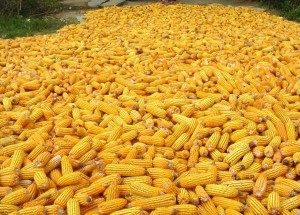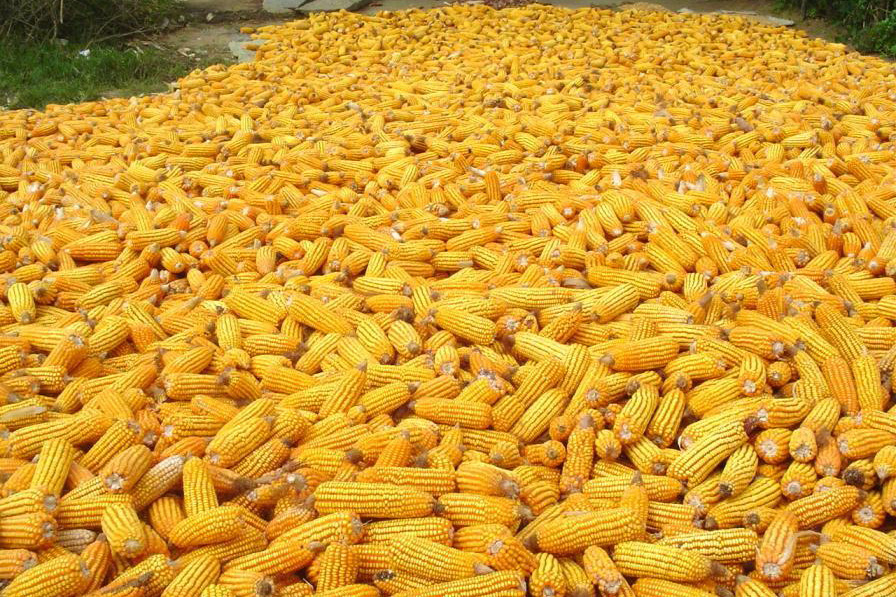
At the risk of inviting all the usual charges of being politically incorrect, I once again put before you the strange practice of burning food for fuel. The video at the bottom of the post details some of the human costs associated with the increasing use of corn, grains, and other crops for fuel.
There is a tendency for environmentalists of our time to think very narrowly about their issues. It is a praiseworthy thing to seek to reduce pollutants and other things that have negative environmental impacts. The Catechism summons us to good stewardship of the earth, the environment, and our natural resources.
However, the human cost of significant changes (to include higher taxes, the elimination of certain technologies altogether, and other things) should be part of the equation. This is especially true in terms of how it affects the developing world. Yet in my experience, the human cost is almost never presented honestly.
Whatever good intentions environmentalists have, the planet, the climate, and the environment seem to be the overwhelming focus of their concern, at least for the most radical of them. And if human beings are considered at all, we are collectively just a big problem: there are too many of us, we do lots of bad stuff, and it seems that the earth would be better off without us.
So here’s an edgy video, from the National Geographic video site, no less! For the record, let me say again that it is a bad idea to burn food for fuel. And if the video below is correct, it’s going to get worse unless we have an honest conversation and come to some consensus that burning food for fuel IS bad.
Stay tuned; this issue is bound to heat up. I pray that common sense will prevail over what is most certainly a bad idea, one which will harm the poor disproportionally.
I know that I normally use my Friday blog for more light-hearted fare, but this video is what popped up in my video queue today. I’m glad to see the concerns are spreading.


Thank you so much for covering this again, and in a new perspective, as it has twigged and co-ordinated a few things that were trying to come together.
Prior to fossil fuels being accessed, so heavily as they are these days, heat for warming and cooking was mainly accessed through burning wood but, there were areas where wood just wasn’t in sufficient supply.
In some of these areas grazing animals (wild or domestic) provided the the end product of food which was then in abundant supply – kinda scattered all around.
People in these places, most notably the Steppes in Eastern Europe and Central Asia and the Great Plains of North America – Pampas too maybe, would gather the dryer items to burn & heat a teepee or a yurt.
Now, they tended to take little, due to sparce populations, so the substances natural source of nourishment for the soil was insignificantly detracted from.
However, human sourced food discard was also available and was used both for heating and for nourishing soil. I’ve heard that lately the use of the human source for soil nourishing is being discontinued due to hte doscovery that, because we’re at the end of the “food chain” and resultantly add too many heavy metals, so disposal is becoming a very serious problem.
Well, if the chemists in the fuel industry can use corn, & such, shouldn’t they be able to extract the fuel stuff from the human sourced product, while diverting the heavy metals to making storage batteries for hybrid cars and the like – thereby maybe solving the organic source of fuel and the heavy metals problem of human derived discard?
The heavy metal processing should be in environmentally secure works (should be able to afford it if they make enough on the fuel) so that we don’t get hat makers experiencing brain damage by handling the mercury in hat bands which resulted in the illogical chatter of the mad hatter in “Alice in Wonderland” – or so I’ve heard.
Then the food could be given to people so that they (we) can provide the raw material.
Definitely, the third world countries will be terribly affected. What with their meager salaries of less than 2USD per day as against 7USD per hour in USA, most of their earnings go to food and if the prices of food even go higher, we will see mass man-made famine all over the world, for the poor is I believe 85 to 90% of the world’s population. The reason why many countries in the world are angry (envious) with USA and other first world countries is because of its greed, voracious, opulent, extravagant and inconsiderate fuel consumption and lifestyles. There is a car of GM, which is the Volt (I am not with GM) which has more than 100mpg consumption. If only it can be sold at a more affordable price, it will alter the carbon footprint of USA. The world is, I think, in one of the greatest turmoils with all these confusion of wars, drought, catastrophic weather patterns, earthquakes, diseases-epidemics, information explosion and man made pessimism. We need to go back to the basic, simple life necessities and be our brothers’ keeper. GOD grant us the wisdom.
I agree –with so many people around the world starving it is callous to use FOOD for fuel. In thier zeal, Environmentalists and population control fanatics—-have a habit of ignoring their fellow man.
Monsignor Pope,
I have been a farmer in South Texas for over thirty years and have always known that government subsidized corn ethanol could and should not compete with feed and food crops.
Below is an article by a Texas A&M professor which shows some of the negative aspects of such a policy.
http://tamutimes.tamu.edu/2013/05/20/u-s-ethanol-policy-has-negative-consequences-says-texas-am-prof/
God Bless
Mark Morris
There are all _sorts_ of alternative fuels that are environmentally friendly without burning food (which I too think is a *bad* idea); there’s too many to list them all but here are several:
– electric vehicles are getting more and more efficient; able to go farther on a single charge and charge faster
– solar vehicles are being made that don’t even need to be plugged in to recharge (see very promising model being constructed by a multidisciplinary team at an Australia university)
– man-made petroleum has been successfully made from cow manure
– alternative fuel (biodiesel I think? (or perhaps ethanol?)) has been successfully made from switchgrass, a hardy weed that can grow on land that food crops won’t grow on
– diesel cars (which get very high mpg, btw, much better than gasoline) can be converted with a very trivial conversion to run on vegetable oil – not vegetable oil that should be used as food, mind you! – but restaurant waste, the oil the restaurant would normally throw away after frying things in it. I knew a family that had converted three vehicles and were paying nothing for fuel (and needed less of it than most people due to higher mpg) because of arrangements they’d made with a local restaurant or two; last I heard they had more fuel than they could use and were stockpiling